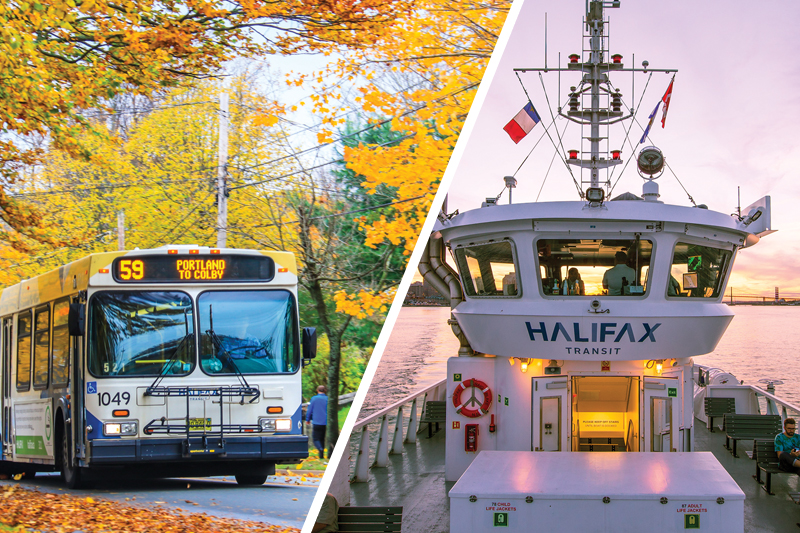Account Login
Don't have an account? Create One

Transportation projects are viewed as likely win-wins for public investment, as both an aid to post-COVID economic recovery and pathway to reducing carbon emissions.
In Nova Scotia, the hope is 2021 will see new financial commitments for some of the projects described in Halifax Regional Municipality’s (HRM’s) Rapid Transit Strategy—a plan for new connections, faster bus routes and farther-reaching ferries. The plan was years in development and received unanimous support from the HRM council in a May 2020 vote.
The plan requires an estimated capital budget of $297 million to $342 million, covering four “bus rapid transit” (BRT) lines and three new ferry routes. That doesn’t include land acquisition costs, or annual operating costs. It’s too much for the regional municipality to handle on its own, leading to cost-sharing applications.
“We’re always feeling like we’re on the cusp. Maybe within the next few months we’ll have more to say. I think it’s in a matter of months, not years, for sure,” said Patricia Hughes, manager for planning and customer engagement with Halifax Transit, speaking with Atlantic Business Magazine in January.
Hughes said the direction from HRM council last year was to look for funding opportunities. That work did not stop through 2020, she said, with exchanges of information with other levels of government.
There are no set timelines. Implementing the Rapid Transit Network could take a decade or more once the additions begin, according to information posted by HRM. The written plan outlines the expected progress of project activities, but with references to “Year 1,” “Year 2,” etc. and not calendar years. Until financing is arranged and the projects given their individual green lights, that clock hasn’t started.
Expanding existing transit services in Halifax and surrounding communities isn’t a new idea. HRM has multiple studies in hand on both bus and ferry services running in and out of the downtown. A 2009 report on the “HarbourLink Plan” explored adding a ferry between downtown Halifax and Mill Cove in Bedford. A Mill Cove ferry is also part of the new HRM transit plan. There were related ferry studies as far back as 2003, and busing studies.
“What we really were missing was one plan that brought them all together, because BRT and ferries should be part of the same network and considered, and put on the same map so that you understand the whole network implications of it,” Hughes said.
From where she sits, it’s all been about proper planning. After the regional municipality developed an integrated mobility plan in 2017, setting out the actions and estimates in the Rapid Transit Strategy was the next step.
With that, the stage is set for tremendous change in HRM transit.
Comment policy
Comments are moderated to ensure thoughtful and respectful conversations. First and last names will appear with each submission; anonymous comments and pseudonyms will not be permitted.
By submitting a comment, you accept that Atlantic Business Magazine has the right to reproduce and publish that comment in whole or in part, in any manner it chooses. Publication of a comment does not constitute endorsement of that comment. We reserve the right to close comments at any time.
Cancel